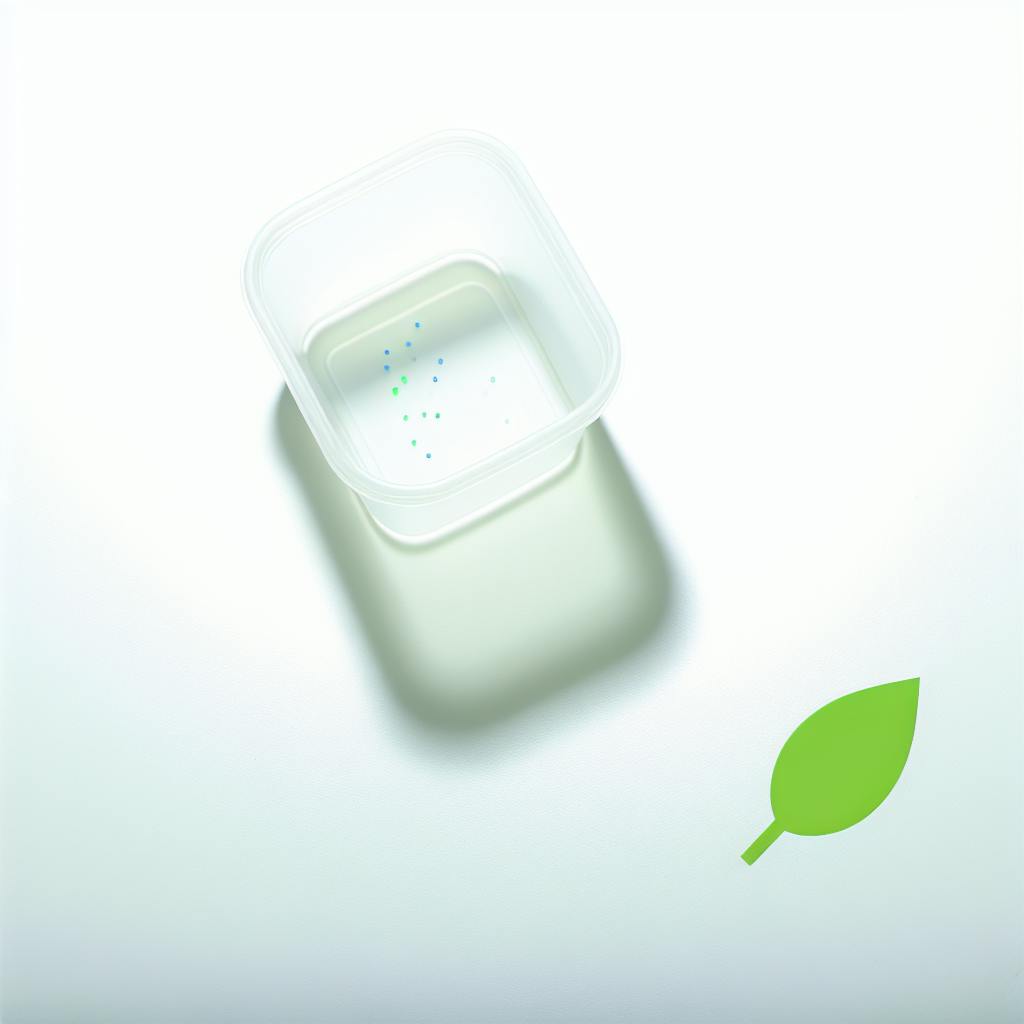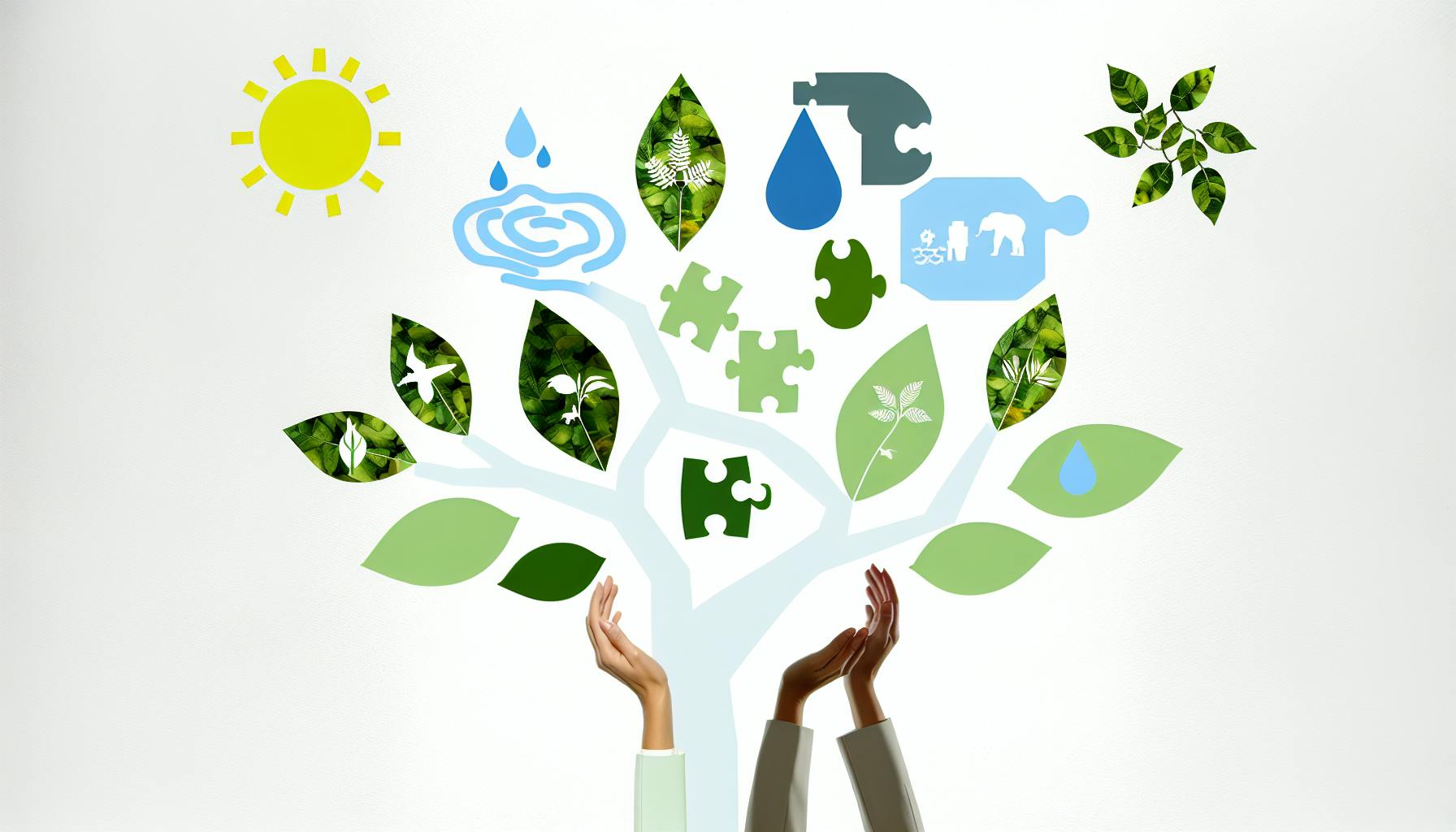Microplastics are tiny plastic pieces less than 5 millimeters in size, found in freshwater environments like rivers, lakes, and streams. These tiny particles can harm aquatic life and potentially affect human health. Citizen science projects allow the public to participate in monitoring microplastics, contributing valuable data to researchers and raising awareness about this environmental issue.
Related video from YouTube
Benefits of Citizen Science Participation
| Benefit | Description |
|---|---|
| Increased Monitoring | Volunteers expand the geographic coverage and frequency of data collection. |
| Source Identification | Mapping microplastic hotspots helps pinpoint pollution sources. |
| Public Awareness | Hands-on participation educates individuals about plastic pollution impacts. |
| Collaborative Efforts | Fosters cooperation between researchers, groups, and the public to tackle the issue. |
Getting Involved
To participate, you'll typically need:
| Equipment | Purpose |
|---|---|
| Bucket or container | Collect water samples |
| Sieve or filter | Separate microplastics from water |
| Sample bottles or bags | Store filtered samples |
| Gloves and protective gear | Safety |
| Waterproof markers or labels | Label samples |
| Datasheets or logbooks | Record sampling details |
| Magnifying glass or microscope (optional) | Inspect samples |
| Camera or smartphone (optional) | Document findings |
Common sampling methods include:
- Surface water sampling (e.g., manta trawls, bulk water sampling)
- Sediment sampling (e.g., grab samplers, core samplers)
- Biota sampling (e.g., dissecting digestive tracts, analyzing feces)
After collecting samples, processing techniques like filtering, density separation, and chemical digestion are used to isolate microplastics. Visual inspection, spectroscopy, and other analytical methods help identify and count the microplastics.
Citizen scientists can share their findings with national databases, research projects, and local agencies. Collaboration and data sharing are crucial for understanding and addressing microplastic pollution in freshwater ecosystems.
Benefits of Public Participation in Scientific Research
Involving regular people in scientific projects offers many advantages for monitoring tiny plastic pieces (microplastics) in freshwater areas like rivers and lakes. By working together, it allows collecting data on a large scale, raising public awareness, and addressing environmental issues as a community.
Affordable Data Collection
These projects use volunteers, enabling researchers to gather data across a wide area at a much lower cost than traditional monitoring methods. This makes it possible to collect extensive information on plastic pollution in various freshwater bodies, providing a better overall understanding of the problem.
Public Education and Awareness
Getting citizens involved in scientific research promotes environmental education and raises awareness about the impact of microplastics on freshwater ecosystems. As volunteers actively participate in sampling and data collection, they gain firsthand knowledge and a deeper appreciation for the challenges posed by plastic pollution. This increased public understanding can drive positive changes in behavior and support for policies aimed at mitigating the problem.
Collaborative Monitoring Efforts
Public participation facilitates collaboration between scientists and regular people in addressing environmental challenges. By working together, researchers can utilize the local knowledge and observations of citizens, while volunteers contribute valuable data that would be difficult or impossible for scientists to collect alone. This collaborative approach fosters a sense of shared responsibility and empowers communities to take an active role in protecting their local freshwater resources.
| Benefit | Description |
|---|---|
| Affordable Data Collection | Volunteers enable large-scale data collection at a fraction of the cost compared to traditional methods. |
| Public Education and Awareness | Hands-on participation promotes environmental education and raises awareness about plastic pollution. |
| Collaborative Monitoring Efforts | Scientists and the public work together, combining expertise and local knowledge to address environmental challenges. |
Getting Involved
Finding Projects
Many groups work on tracking tiny plastic pieces (microplastics) in freshwater areas like rivers and lakes. Some key ones are:
- The Freshwater Microplastics Project by the University of Minnesota Duluth, mapping microplastic pollution across North America.
- The Plastic Tide, a global project focused on monitoring plastic pollution in waterways.
- Local watershed groups, environmental organizations, or university labs may have projects in your area.
Check their websites or contact them to learn how to take part.
What You Need
To join in monitoring microplastics, you'll typically need:
| Equipment | Purpose |
|---|---|
| Bucket or container | Collect water samples |
| Sieve or filter (100-300 micron mesh) | Separate microplastics from water |
| Sample bottles or bags | Store filtered samples |
| Gloves and protective gear | Safety |
| Waterproof markers or labels | Label samples |
| Datasheets or logbooks | Record sampling details |
| Magnifying glass or microscope (optional) | Inspect samples |
| Camera or smartphone (optional) | Document findings |
Many projects provide sampling kits with the required items and instructions.
How to Sample
1. Choose a Location: Pick a freshwater site like a river, stream, lake, or pond to monitor. Avoid areas with strong currents or hazards.
2. Prepare: Put on gloves and other safety gear. Label your sample containers with details like date, time, location, and your name.
3. Collect Water: Use your container to scoop up a known volume of water (e.g., 1 liter) from just below the surface.
4. Filter the Sample: Carefully pour the water through the mesh sieve or filter, allowing the water to drain while capturing any microplastics or debris on the mesh.
5. Store and Transport: Transfer the filtered contents into your sample container, seal it, and store it properly for transport or further analysis.
6. Record Data: Note details like GPS coordinates, water conditions, weather, and any visible microplastics or debris in your logbook or datasheet.
Always follow the specific instructions provided by the project you're participating in, as sampling methods may vary.
sbb-itb-1dc3f59
Sampling Methods
Surface Water Sampling
Collecting samples from the water's surface is a common way to check for tiny plastic pieces (microplastics) in freshwater areas like rivers and lakes. Two widely used methods are:
| Method | How It Works | Advantages | Drawbacks |
|---|---|---|---|
| Manta Trawls | A net is pulled behind a boat to gather surface microplastics | - Samples large water volumes - Captures very small microplastics (<300μm) |
- Requires a boat - Affected by wind/currents - More costly |
| Bulk Water Sampling | Water is collected directly into containers, then filtered | - Simple and low-cost - Can sample at various depths - Portable for remote areas |
- Limited sample volume - May miss smaller microplastics - More labor-intensive |
Manta trawls provide more complete data but need specialized equipment and boat access. Bulk sampling is cost-effective for citizen science projects but may underestimate microplastic levels.
Sediment Sampling
Sediments at the bottom of lakes and rivers can trap microplastics, so sampling these areas is important. Common methods include:
- Grab samplers: Scoop up surface sediments, best for soft bottoms.
- Core samplers: Extract a vertical core of sediment layers for historical analysis.
- Visual collection: Manually pick up microplastics from shorelines or riverbeds.
Proper handling, sieving, and density separation techniques are needed to extract microplastics from sediment samples.
Biota Sampling
Aquatic creatures like fish, mussels, and zooplankton can ingest microplastics. Sampling these organisms provides insights into biological impacts:
- Dissect digestive tracts to isolate microplastics.
- Use chemical digestion to dissolve organic matter, leaving only microplastics.
- Analyze feces/egestions to assess microplastic excretion rates.
Biota sampling is more complex but vital for assessing ecological risks and food web transfer of microplastics.
Sample Processing
Preparing Samples
Getting samples ready for analysis is key to finding tiny plastic pieces (microplastics). Common methods include:
- Filtering: Passing the sample through filters with small holes (e.g., 300 μm, 100 μm) to catch microplastics while letting water pass through.
- Separating by density: Using dense salt solutions (e.g., sodium chloride, zinc chloride) to separate microplastics from heavier materials like sand or organic matter based on how well they float.
- Digesting organic matter: Using chemicals (e.g., hydrogen peroxide, enzymes) to break down organic matter, leaving only the inorganic microplastics behind.
The method used depends on the sample type (water, sediment, living creatures) and the size of microplastics you want to find. You may need to combine multiple steps to get the best results.
Identifying and Counting Microplastics
After isolating the microplastics, you can identify and count them using various techniques:
| Technique | How It Works | Pros | Cons |
|---|---|---|---|
| Visual Inspection | Looking at particles under a microscope and identifying plastics based on their appearance. | Simple, inexpensive | Subjective, limited size range, can't identify plastic types |
| Spectroscopy (FTIR, Raman) | Analyzing the chemical makeup and molecular bonds to identify plastic polymers. | Highly accurate for identifying plastic types | Expensive equipment, time-consuming for large samples |
| Thermal Analysis (DSC, TGA) | Measuring properties like melting point and decomposition temperature to characterize plastics. | Helps identify plastic polymers, complements spectroscopy | Destructive, limited to specific plastics |
| Staining/Fluorescence | Using dyes or fluorescent tags that stick to plastics for easier viewing. | Enhances detection, especially for smaller particles | Potential interference, limited specificity |
Often, researchers use a combination of visual sorting and spectroscopic techniques for a thorough analysis, balancing accuracy, cost, and efficiency.
Quality Control
Following quality control measures is crucial for getting reliable and consistent results in microplastics research:
- Blanks: Running control samples (e.g., filtered water, air samples) alongside your samples to check for potential contamination.
- Replicates: Analyzing multiple copies of the same sample to assess variability and precision.
- Spiked samples: Adding known amounts of reference microplastics to samples to evaluate how well the method recovers them.
- Clean air protocols: Processing samples in clean air environments or laminar flow hoods to minimize airborne contamination.
- Consistent methods: Following standardized protocols for sampling, sample preparation, and analysis to ensure results can be compared across studies.
Quality control practices help identify and reduce potential sources of error, ensuring the integrity and validity of microplastics data.
Data Management
Recording Data
Keeping good records is key for citizen science projects. Give volunteers:
- Data sheets or forms to note details like:
- Sampling location (GPS, water body name, etc.)
- Date and time
- Weather and water conditions
- Sample type (water, sediment, living things)
- Sampling method and equipment
- Observations and notes
- Cameras or phones to take photos/videos as extra documentation
Have clear rules for labeling, organizing, and safely storing data.
Reporting Findings
Citizen scientists can share their findings with:
- National databases like the Marine Debris Tracker (U.S.) or EMODnet (Europe)
- Research projects studying microplastics in freshwater
- Local agencies or groups working on plastic pollution
Follow each group's guidelines for reporting data formats.
Data Sharing
Working together and sharing data helps understand microplastic pollution better:
- Online platforms like SciStarter or Zooniverse make data public
- Project networks link regional/global microplastics citizen science efforts
- Open repositories like Dryad or Figshare allow data sharing and reuse
Sharing data increases the impact of citizen science and enables collaboration on solutions.
Challenges and Limitations
While citizen science offers many benefits for monitoring microplastic pollution in freshwater, there are some challenges to consider.
Data Quality
Ensuring accurate data is a key concern. Volunteers may lack formal training, leading to potential errors in:
- Sampling
- Identifying microplastics
- Recording data
To address this:
| Solution | Description |
|---|---|
| Training and Protocols | Provide clear instructions and comprehensive training. |
| Quality Control | Implement measures like field blanks and lab duplicates. |
| Expert Review | Validate data through expert analysis or statistical methods. |
Standardized Methods
Inconsistent sampling and processing methods can make it difficult to compare data across projects or regions. Standardized protocols are needed for:
| Area | Standardization Needed |
|---|---|
| Sample Collection | Water, sediment, biota |
| Sample Processing | Filtration, density separation |
| Microplastic Identification | Visual, spectroscopic techniques |
Standardization ensures data compatibility and enables large-scale assessments.
Volunteer Engagement
Maintaining long-term volunteer participation is crucial. Strategies to engage and retain volunteers include:
- Providing regular feedback and recognition
- Offering training and educational opportunities
- Facilitating social interactions and community building
- Clearly communicating project goals and impact
Effective volunteer management is key to the success of citizen science initiatives.
Conclusion
Citizen science projects play a key role in tackling microplastic pollution in freshwater environments like rivers and lakes. By involving the public, these initiatives gather valuable data and raise awareness about this environmental issue.
The combined efforts of citizen scientists, researchers, and organizations can significantly improve our understanding of microplastic distribution, sources, and impacts. By following standardized methods and quality control measures, citizen science data can contribute to informed decision-making and effective management strategies.
Citizen science offers several advantages, including cost-effective data collection, public engagement, and collaborative monitoring. By participating, individuals can directly contribute to protecting freshwater resources and promoting a sustainable future.
We encourage readers to explore citizen science opportunities in their local communities and actively participate in microplastic monitoring initiatives. Your involvement can make a real difference in safeguarding the health of our waterways and aquatic ecosystems.
Together, we can foster a collective responsibility and take meaningful steps towards mitigating the global plastic pollution crisis. By harnessing the power of citizen science, we can drive positive change and ensure a cleaner, safer environment for future generations.
FAQs
How do regular people help with plastic pollution issues?
Citizen science projects allow individuals to take part in collecting data and raising awareness about microplastics in freshwater areas like rivers and lakes. Here's how they contribute:
1. Expanding Monitoring
Volunteers can gather information across a wider area, providing a better overall picture of the microplastic problem.
2. Identifying Sources
By mapping where microplastics are found, citizen science data can help pinpoint potential pollution sources, enabling targeted solutions.
3. Public Education
Participating in these projects teaches people about the impacts of plastic pollution, encouraging sustainable practices and support for policy changes.
4. Research Collaboration
Citizen science brings together researchers, organizations, and the public to work together on addressing this global challenge.
Benefits of Citizen Science Participation
| Benefit | Description |
|---|---|
| Increased Monitoring | Volunteers expand the geographic coverage and frequency of data collection. |
| Source Identification | Mapping microplastic hotspots helps pinpoint pollution sources. |
| Public Awareness | Hands-on participation educates individuals about plastic pollution impacts. |
| Collaborative Efforts | Fosters cooperation between researchers, groups, and the public to tackle the issue. |


